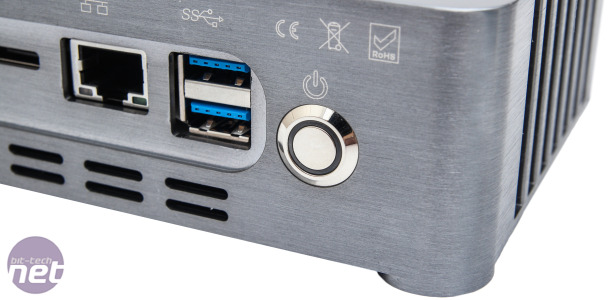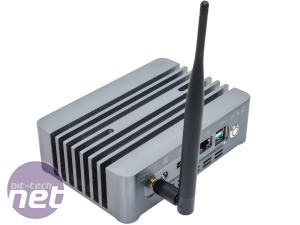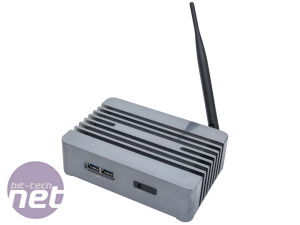
Performance Analysis
We've already seen the performance of the D54250WYB motherboard in our full review and there's not much difference between the Abel H2-5, which is to be expected. It was a tiny bit slower in some tests, but nothing worth writing home about. It was consistently faster than its Ivy Bridge-based Core i5 predecessor, the DC53427RKE, and close to desktop Sandy Bridge Core i3 levels too, with the Core i3-2100 just over 100 points clear in the GIMP-based image editing test. That said, the Ivy Bridge Core i3-3220 had a significant lead, so we can't get too carried away with the performance here.Image editing is one area that Intel has always had a clear lead over AMD and it shows here - the Abel H2-5 was much faster even than AMDs latest APU, the AMD A10-7850K. Turbo boost and Hyper-threading do allow it to keep up in video encoding too, again a match for the Core i3-2100 and not a million miles away from AMD's A10-7850K, but seeing as the Core i5-4250U is essentially a low power laptop CPU, we can't expect too much. Overall, its score of 1,342 was noticeably faster than the DC53427RKE Ivy Bridge NUC board.
Click to enlarge
Gaming at this end of the scale creates quite a few quandaries as to what to go for, but at the super-budget end of the scale, it's AMD's APUs that are a far better bet than an Intel NUC. Even at 1,680 x 1,050, though, the Abel H2-5 managed playable frame rates but if you're looking for 1080p gaming here, you'll need to look elsewhere. SATA 6Gbps speeds were respectable from both SSDs although the Toshiba THNSNH128GMCT was a little slow on the writes in ATTO at 481MB/sec.
Power consumption is something that Intel is focusing on heavily these days, and a 6W idle and 26W load draw are certainly going to save you money on your electricity bill compared to an AMD APU or lone Intel desktop CPU. Under load the A10-7850K for example drew nearly five times as much power under full load. Admittedly it's also faster in games but not five times as much.
Temperatures exhibited very similar characteristics to other fanless cases we've seen. The Abel H2-5 does get pretty warm after 20 minutes of streaming HD content from Netflix, even with the case in the open. A delta T of 57°C in our worst case scenario of Prime95 enclosed in a TV cabinet had the CPU pushing 80°C, but this is well within limits and doing the same while watching Netflix saw a delta T of a more amenable 43°C. As such, while toasty, these temperatures aren't a concern - we're not aiming for sky-high overclocks here after all, just a stable system that isn't going to cook itself.
Click to enlarge
Conclusion
The Abel H2-5 is niche, and there are better options if size and noise aren't important, especially if you'll be playing the odd game or editing photos or videos - a basic no-frills Core i3 or Core i5 desktop would be our choice there while an AMD APU rig would cost less and offer far better game performance.However, it's clearly aimed at those that only need a modicum of performance, perhaps something more than a Raspberry Pi can offer, but equally need a silent, super-low power setup where an AMD APU system has been deemed too power hungry. One thing is for sure, with plenty of USB 3.0 ports, Gigabit LAN plus WiFi, the Abel H2-5 would make for a fantastic HTPC or home server if space is at a premium and noise is of critical concern, plus you could also consider a 1TB 2.5in drive internally too.
That aside, the case looks fantastic and is pretty much bomb proof - something that might also appeal to offices and businesses that don't want your average Dell or Acer slimline PC. You can of course buy the board and case separately if you've got a spare parts laying around to bring the price down, but as it stands it includes a complete PC with an SSD, so while it doesn't have the grunt of a desktop PC, considering the case alone costs £100, if you throw in an SSD, RAM, WiFi module, power brick, Windows plus the D54250WYB which currently retails for over £260 on its own, it actually fares well compared to cheap PCs with otherwise similar specifications.

-
Speed15 / 25
-
Design23 / 25
-
Hardware23 / 25
-
Value21 / 25


MSI MPG Velox 100R Chassis Review
October 14 2021 | 15:04











Want to comment? Please log in.